Chapter: High Voltage Engineering : High Voltage Testing of Electrical Power Apparatus
Tan Delta Measurement
TAN DELTA MEASUREMENT
In case
of time varying electric fields, the current density Jc using Amperes law is
given by
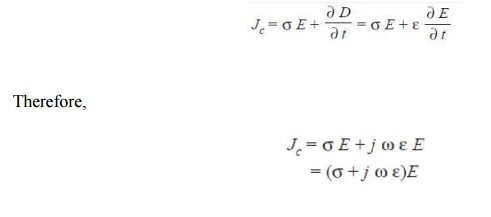
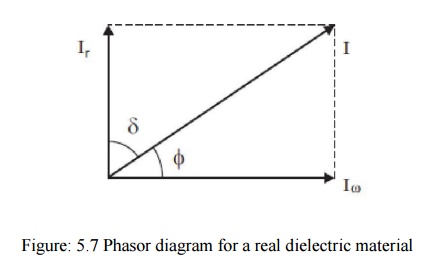
In
general, in addition to conduction losses, ionizationand polarization losses
also occur and, therefore, the dielectric constant ε = ε0 εr is no longer a
real quantity rather it is a complex quantity. By definition, the dissipation
factor tan δ is the ratio of real component of current Iω to the reactive
component Ir (Fig.5.7). Here δ is the
angle between the reactive component of current and the total current flowing
through the dielectric at fundamental frequency. When δ is very small tan δ = δ
when δ is expressed in radians and tan δ = sin δ = sin (90 – φ) = cos φ i.e., tan δ then equals the power factor
of the dielectricmaterial.As mentioned earlier, the dielectric loss consists of
three components corresponding to the three loss means for each of these an
individual dissipation factor can be given such that mechanism
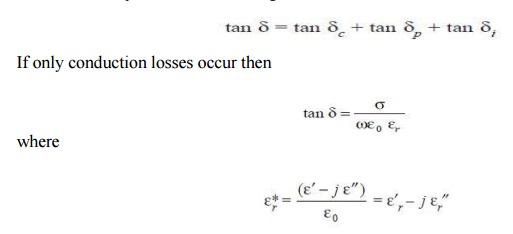
εr* is called the complex relative
permittivity or complex dielectric constant, ε′ and εr′ are called the permittivity and relative permittivity and ε″ and
εr″ are called the loss factor and
relative loss factor respectively.T he loss tangent the product of the angular
frequency and ε″ is equivalent to the dielectric conductivity ζ″ i.e., ζ″ = ωε″. The dielectric
conductivity takes into account all the three power dissipative processes
including the one which is frequency dependent. Fig. 5.8 shows two equivalent
circuits representing the electrical behavior of insulating materials under
a.c. voltages, losses have been simulated by resistances
The loss
tangent
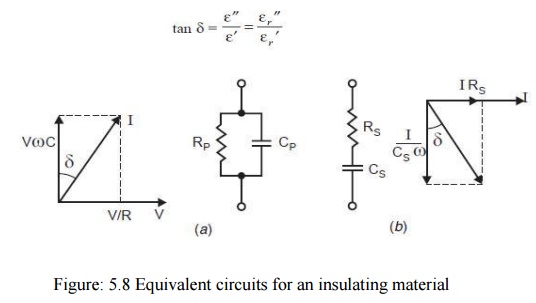
Normally
the angle between V and the total current in a pure capacitor is 90°. Due to
losses, thisangle is less than 90°. Therefore, δ is the angle by which the
voltage and charging current fall short ofthe 90° displacement.
For the
parallel circuit the dissipation factor is given by
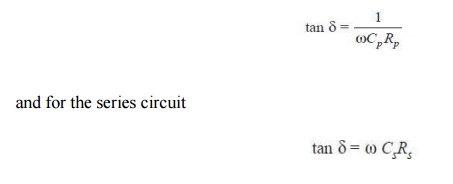
For a
fixed frequency, both the equivalents hold good and one can be obtained from
the other. However, the frequency dependence is just the opposite in the two
cases and this shows the limitedvalidity of these equivalent circuits.The
information obtained from the measurement of tan δ and complex permittivity is
an indicationof the quality of the insulating material.
If tan δ varies and changes abruptly with the application of high voltage, it shows inceptionof internal partial discharge.
The effect to frequency on the dielectric properties can be studied and the band of frequencies where dispersion occurs i.e., where that permittivity reduces with rise in frequency can be obtained.
Related Topics